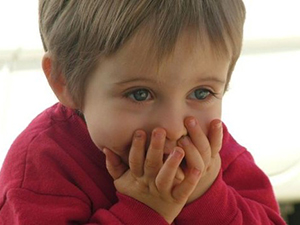Treatment of epilepsy in children

The treatment of Epilepsy is done with antiepileptic drugs (AED). Only two-thirds of children with Epilepsy can have complete seizure control from medication. After the year 1993, we have an expansion of the production of new-generation antiepileptics which, compared to the old generation of antiepileptics, are more effective and have fewer side effects.
Since the spectrum of epileptic syndromes in children is much broader compared to adults, treating children requires the necessary training and experience. Children, in addition to presenting a variety of different epileptic syndromes, also have many episodes that resemble epilepsy but are in fact not epilepsy, therefore they need to be well differentiated to avoid incorrect treatment.
In pediatric ages, neurological disorders that are causes of epilepsy can be encountered. Some of the AEDs are not approved for use in pediatric ages, however, sometimes the need arises to use them “off label”. The way antiepileptic drugs are absorbed in the body differs in children from adults. Side effects are different at different ages.
Steps in the treatment of Epilepsy
Firstly, identifying the type of seizure is a crucial moment. Recording the seizure by the parents is extremely important to differentiate whether we are dealing with an epileptic seizure or not and to further determine the type of epileptic syndrome. In children, the exclusion of metabolic causes is essential. Importance is given to the identification of coexisting diseases such as mental retardation, cerebral palsy, cognitive disorders, etc.
In some cases, treatment with AEDs is futile if the cause of the epilepsy, such as pyridoxine deficiency, biotinidase deficiency, or a defect in glucose transport, has not been discovered and treated.
Should treatment be started or not?
This is a question that the Neuropediatrician often faces in daily medical practice. Generally, treatment with antiepileptics is not recommended with a single seizure. The risk of side effects from medications may outweigh the risk of having a convulsive seizure. Therefore, before treatment, we need to balance risk-benefit.
There are some types of seizures where treatment with AEDs may not be necessary, like febrile convulsions, Rolandic epilepsy, etc. Before starting treatment, the risk for further seizures must be determined. E.g., if the child has had only one seizure of an undetermined cause, normal neurological examination, and normal EEG, the risk of having a subsequent seizure is low. In this case, it is good to wait. But if the seizure is accompanied by an abnormal neurological examination or anomalies on the EEG, the risk is high.
Choosing the appropriate medication at the right time.
Choosing the appropriate medication for the treatment of epilepsy is the challenge of the Neuropediatrician. Before starting treatment, two moments should be considered. Firstly, choosing the medication based on the syndrome, but also the side effects of the medication based on the individual characteristics of each individual to be treated. Side effects are also related to age. E.g., studies have shown that hepatic injuries from the use of Valproic Acid or Stevens-Johnson syndrome from Lamotrigine are more often seen in children.
Often, doctors prefer to use broad-spectrum antiepileptic as long as the type of syndrome has not been precisely determined. Always start treatment with one antiepileptic and a second can be added to therapy in resistant forms. Starting two medications simultaneously is unacceptable. Treatment is started gradually, reaching a maintenance dose from 2 to 6 weeks depending on the medication used. The goal of therapy will be to stop seizures without side effects. Measuring the level of AED in the blood is done when we have questions for which the determination of the medication level in the blood gives us the solution.
When is treatment discontinued?
There is no exact protocol for when is the appropriate time to stop the medication, but it has found wide support that treatment should start being discontinued after a 2-year period without seizures and with normalized EEG data. Before removing the medication, it should be discussed with the parents.
EEG recording before the decision to remove the medication is extremely important. But in certain cases, treatment must continue further. This is based on an assessment made by the doctor about the risk of recurrence of the disease after stopping the medication. The risk of recurrence of the disease after stopping treatment is lower in children (20-39%) than in adults (40-50%).
Removing the medication can be done gradually according to a 3-month or 6-month scheme. This is decided by the doctor, discussing it together with the parent depending on the characteristics of the child being treated. If seizures return after stopping the medication, the same treatment that was effective before should be restarted.
Often parents are scared when we learn that their child is diagnosed with Epilepsy. They define epilepsy as a disease that leaves mental consequences. But not always epilepsy is accompanied by retardation. We have many patients who, after a few years of having their medication removed, live a normal life, without seizures, and of course, have excellent academic results.
Out of curiosity, we can mention some names of famous people who suffered from Epilepsy like Vincent van Gogh, Isaac Newton, Napoleon Bonaparte, Charles Dickens, Alfred Nobel, Leonardo Da Vinci, Nicolo Paganini, Peter Tchaikovsky, and many others.
So far we are very satisfied and thank Dr. Artan for the work and dedication he has for the work he does for our children who are the light of our eyes, our life, the most precious thing. Thank you
Sent by Merita Demiri, më 26 September 2016 në 07:55